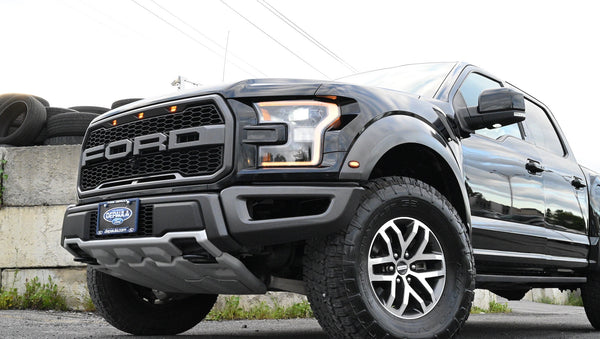START TYPING TO SEE PRODUCTS YOU ARE LOOKING FOR.
0
Your shopping cart is empty.

We wrote about the BD Diesel Ford F150 3.5L EcoBoost Manifold outperforming the original equipment manufacturer(OEM) exhaust manifold, and they have now released a new product. Does BD diesel still reign over the OEM?
Ford’s EcoBoost engine has been part of the Ford F-150 for more than a decade and is popular for its ability to offer improved fuel economy without sacrificing power. These smaller 3.5L engines provide the power of OEM a 6.0L at half the size, but it didn’t take too long for flaws in their design to become evident.

Once put to use, the EcoBoost started to have some issues. Specifically, the spinning twin turbos can reach up to 170,000 rpm, resulting in a tremendous amount of heat. The exhaust manifolds, sitting on the engine’s sides, are tasked with transferring this extremely hot gas emitted by the engine. With a more compact engine bay, the ability of this heat to dissipate is limited. As a result, components under the hood are exposed to extreme heating and cooling cycles.
The effect of this is twofold: metals like steel can lose strength over time when they are exposed to very high temperatures, and dissimilar metals such as steel exhaust manifold bolts and the aluminum head do not work well together in the extreme heat, which may result in the two essentially fusing together. This can result in issues such as the bolts on the exhaust manifold breaking. It may even become impossible to remove the bolts from the aluminum head.

Another design flaw lies in the fact that the Ford 3.5L exhaust manifold does not make use of all the stud locations. Only 8 of the 11 locations available were originally used, which leads to warped exhaust manifolds and blown gaskets.
To provide a solution to consumers, BD Diesel created the Ford F150 3.5L EcoBoost Exhaust Manifold Kit, designed to provide superior reliability and overcome the common problems seen in the OEM parts.
In response to the difficulties being faced by consumers and their need to turn to aftermarket parts, Ford made their own changes to the manifold design. With customers perceiving OEM parts as superior, many have opted to turn to the upgraded Ford design, but flaws do still exist, leaving the BD Diesel manifold as an excellent alternative.

Although Ford did make improvements to their design, consumers still benefit from using the BD Diesel manifold. While Ford increased the number of studs in use, they are still limited to 9, while the BD manifold makes use of all 11 available locations. This means the BD manifold still does a better job of holding the manifold to the head to prevent exhaust gasket leaks.
A significant difference between the Ford exhaust manifold and that of BD Diesel is the fact that Ford is using stainless steel. While this holds appeal in the eyes of the customer because it won’t rust, stainless steel also expands more than cast iron does when exposed to high temperatures. The result? As the manifold heats up and expands it increases the stress on the fasteners and will cause them to break even faster than the cast iron manifold!
Ford also does not provide longer studs with spacers, while BD does. The stud spacers increase the clamping length of the stud which allows the manifold to expand and contract more before breaking studs. The prevention of stud cracking is another way in which BD’s manifold design is superior.
With superior quality and performance at a comparable price to the OEM equivalent, the BD Diesel Ford F150 EcoBoost manifold remains the top choice for consumers.
Your detected location:
Please select the location that best suits you: